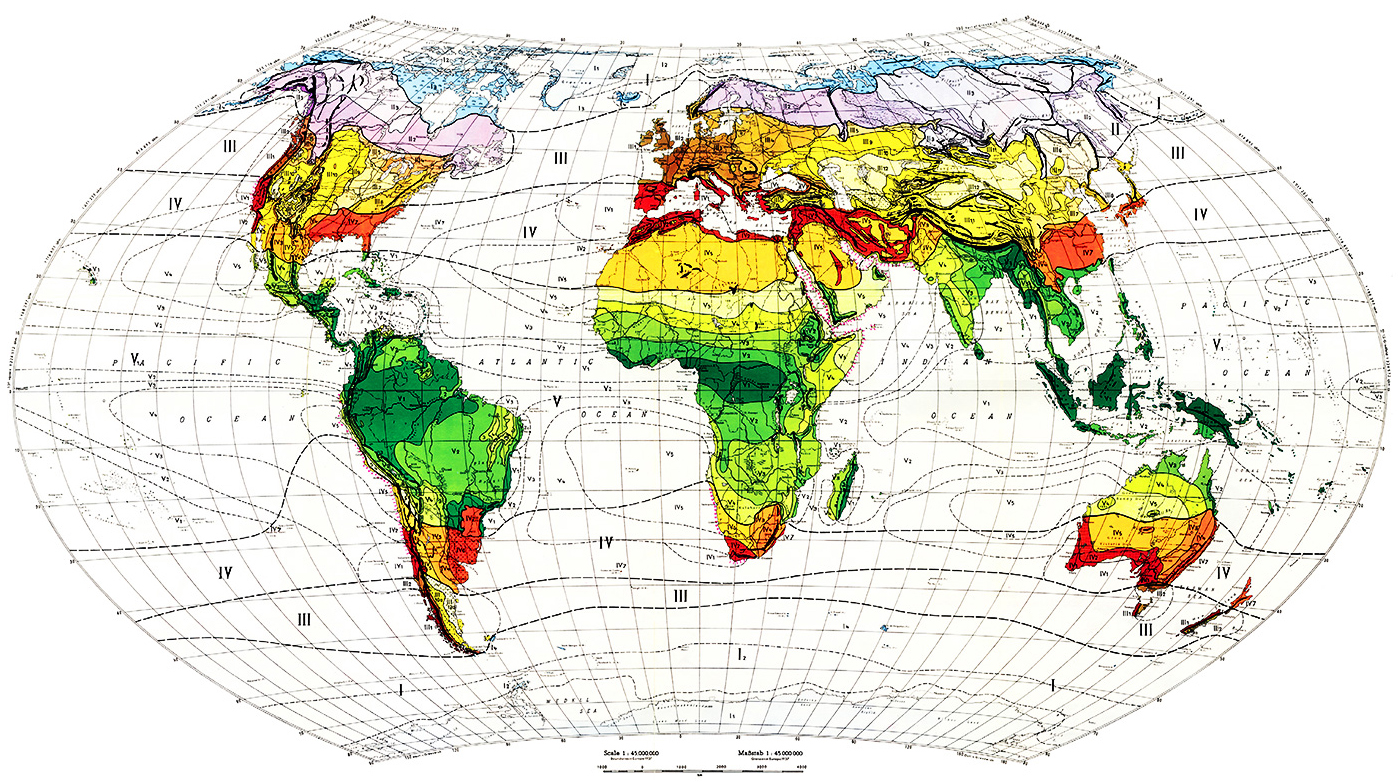KOREA
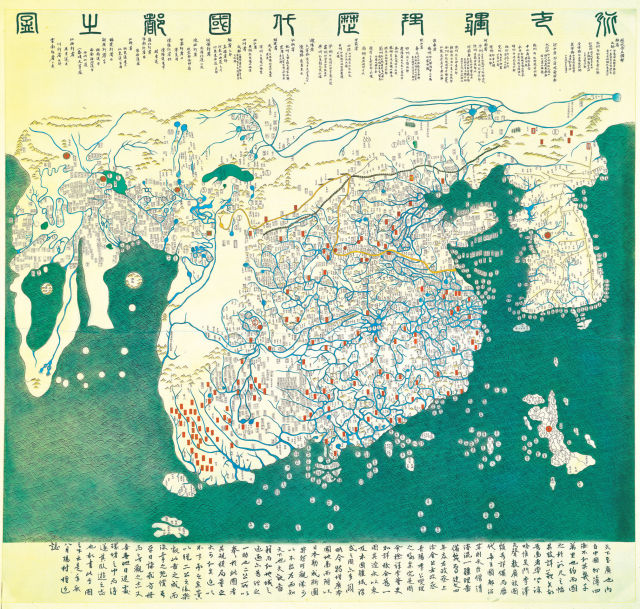
혼일강리역대국도지도
쿠빌라이 칸이 원대한 해양제국의 전망을 갖고 동남아시아 정복에 큰 공을 들였음을 떠올린다면, 그리고 원대 후기 재정의 30-40 퍼센트가 해양무역에서 충당되었음을 상기한다면, 혼일강리역대국도지도의 제작자들이 해양으로서의 동남아시아를 실제 크기보다 훨씬 작게 묘사한 이유는 무엇일지 궁금하다. 또한 지도의 왼편에 있는 아프리카의 내륙을 달 모양으로 묘사한 것도 흥미롭다.
Gangnido
Considering that Kublai Khan made great efforts to conquer Southeast Asia with the prospect of establishing a grand marine empire, and that 30-40 percent of his finances were derived from marine trade in the late Yuan dynasty, I wonder why the cartographers depicted Southeast Asia as a much smaller ocean than it actually was. It is also interesting to see the interior of Africa depicted on the left side of the map in a crescent shape.
언어(훈민정음), 풍토, 역사
풍토(Klimat)는 인간과 자연의 존재에 영향을 미치는 기후, 기상, 지질, 토질, 지형, 경관 등을 포괄하는 개념이다.” 풍토는 기후(Climate)와 근본적으로다른 ‘지리철학’적 개념이다. 독일의 역사철학자 요한 고트프리트 헤르더에 의하면, 풍토는 인류사와 자연사를 연결하는 핵심 개념이다하이데거가 ‘언어는 존재의 집’이라고 말했을 때, 이는 ‘집’을 ‘정녕 하나의 우주’라고 말한 가스통 바슐라르의 언설과 맞닿아 있다. 또한 하이데거가 언급한 ‘존재’란 시간과 공간의 매트릭스에서 살아가는 역사적 인간을 의미한다.이렇게 볼 때, 언어는 풍토적 인간의 우주라고 말할 수 있다. 다시 말해서 역사적 인간은 풍토적 언어를 사용하면서 우주적 존재가 된다. 6장에서 논의하겠지만, 조선중화주의 세상에서는 세종이 위대한 유산으로 남긴, 조선의 풍토적 언어인 훈민정음이 아닌 중국의 풍토적 언어인 한문만을 사용함으로써, 조선의 호모 사피엔스는 우주적 존재로의 길을 차단당하고 말았다.
모든 언어는 ‘소리’(音)의 언어이다. 이런 점에서 《훈민정음 해례본》의 ‘국지어음’(國之語音)은 ‘나라 말소리’로 번역되어야 맞다. 고려와 조선의 풍토가 중국[송, 대원, 명, 청]의 그것과 달랐다는 것은 두 지역에서의 소리의 언어가 다를수밖에 없었다는 것을 의미한다. 이는 언어의 풍토적 기원을 입증하는 것이다.빌헬름 훔볼트의 표현을 따른다면, 이는 두 지역의 ‘언어적 세계상’(sprachliche Weltansicht)이 다르다는 것을 뜻한다. 세계상이란 “모든 언어는세계를 고유한 범주 망과 개념 망으로 포획한다.”는 것을 말한다. 이렇게 볼때, 모든 언어는 종족적/민족적 특성이 있는 법이다. 세종은 15세기에 이러한언어학적 성격을 깊이 인식했다. 그렇기에 《훈민정음》의 서문에 나와 있듯이,“우리나라의 말소리가 중국의 말소리와 달라 문자로는 서로 소통되지 않는다.”(國之語音, 異乎中國, 與文字不相流通)는 내용은 바로 ‘풍토론의 산물’이다.세종은 중국의 풍토와 다른, 조선의 그것에 맞는 음운론에 근거해서 훈민정음을 만든 것이다.
Language, Klimat, and History
Klimat is a concept that encompasses climate, weather, geology, soil, topography, and landscape that affect the existence of humans and nature.” Klimat is a ‘geo-philosophical’ concept that is fundamentally different from climate. According to German philosopher of history Johann Gottfried Herder, klimat is a key concept that connects human history and natural history. When Heidegger said, “ Language is the house of being,” this is in line with the words of Gaston Bachelard, who said that “house” is “truly a universe.” In addition, the “being” that Heidegger mentioned refers to historical humans living in the matrix of time and space. In this sense, language can be said to be the universe of klimatological humans. In other words, historical humans become cosmic beings by using klimatological language. As discussed in Chapter 6, in the world of Joseon Sinocentrism, the path to becoming a cosmic being was blocked for Joseon Homo sapiens by using only Chinese characters, the language of the Chinese language, rather than Hunminjeongeum, the language of
All languages are languages of ‘sounds’ (音). In this respect, ‘國之語音’ (國之語音) in the Hunminjeongeum Haeryebon should be translatedas ‘country’s language sounds’. The fact that the customs of Goryeoand Joseon were different from those of China (Song, Yuan, Ming,Qing) means that the languages of sound in the two regions couldnot help but be different. This proves the origin of language in thelocality. In Wilhelm Humboldt’s words, this means that the ‘linguisticworldview’ (sprachliche Weltansicht) of the two regions is different.The worldview means that “every language captures the world withits own network of categories and concepts.” In this way, all languageshave ethnic/national characteristics. Sejong deeply recognized thislinguistic characteristic in the 15th century. Therefore, as written in thepreface of Hunminjeongeum, “The sounds of our language are differentfrom those of China, and we cannot communicate with each otherthrough letters” (國之語音, 異乎中國, 與文字不相流通) is precisely theproduct of ‘the theory of phonology.’ Sejong created Hunminjeongeumbased on the phonology that suited Joseon, which was different fromChina’s phonology.
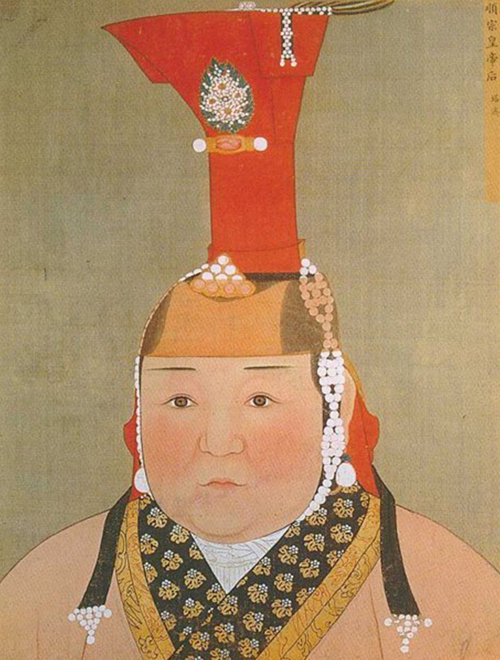
여성과 불교는 동병상련
불교와 여성의 동병상련 관계는 훈민정음의 창제에 따른 여러 불경의 언해본 번역과도 맞물려있다. 세종의 둘째 딸인 정의(貞懿)공주는 어려운한문에 토를 달아 우리말 표기를 가능하게 했다.불경의 기초가 된 산스크리트어와 몽골어인 파스파 문자에 능통했던 신미(信眉)대사는 불경을 언해본으로 번역하는데 심혈을 기울였다. 이들이 한글의 창제와 확산에 미친 공헌을 제대로 평가할 필요가 있다. 왕실과 사대부의 여성들이 한글을 적극적으로 배워 사용했다는 사실도 못지 않게 매우중요하다. 세조의 부인이며 예종의 어머니요 성종의 할머니였던 정희(貞熹)왕후는 많은 불화의 제작을 적극 지원했다. 이 전시의 백미에 해당하는 한 쌍의 작품인 <석가탄생도>와 <석가출가도>는 정희왕후가 지원했음에 틀림없다.
WOMEN AND BUDDISM IN JOSEON
The relationship between Buddhism and women is also linked to the translation of many Buddhist scriptures through the creation of Hunminjeongeum. Princess Jeongui, Sejong's second daughter, made it possible to write in Korean by simplifying difficult Chinese characters. Ambassador Shinmi, who was proficient in Sanskrit and Mongolian Paspa texts, the foundation of Buddhist scriptures, dedicated herself to translating the Buddhist scriptures into Korean. It is essential to acknowledge their contributions to the development and dissemination of Hangul. The active involvement of women from the royal family and four generations in learning and using Hangul is equally significant. Queen Jeonghee, the wife of King Sejo and grandmother of King Yejong's mother King Seongjong, actively supported the creation of numerous Buddhist paintings. The exhibition's highlights, "Sakyamuni's Birth" and "Sakyamuni Buddha", supported by Queen Jeonghee.
김민기, <내 나라 내 겨례>
나의 조국은 허공에 맴도는
아우성만 가득한 이 척박한 땅
내 아버지가 태어난 이곳만은 아니다
북녘땅 시린 바람에 장승으로 굳어버린
q 거대한 바위덩어리
내 어머니가 태어난 땅
나의 조국은 그곳만도 아니다
나의 조국은 찢긴 철조망 사이로
스스럼없이 흘러내리는 저 물결
바로 저기 눈부신 아침햇살을 받아
김으로 서려 피어오른 꿈속 그곳
바로 그곳
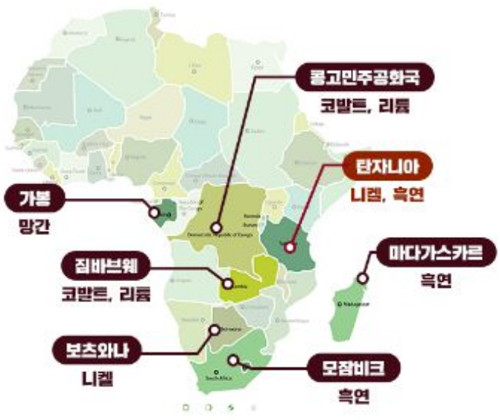
한국에서 탁상공론하지 말고, 아프리카 광물현장으로 떠나라
조선 초에 제작된 ‘혼일강리역대국도지도’는 아프리카가 포함된 한국 최초의 지도이다. 19세기 사상가 최한기는 한국 최초의 세계지리서 ‘지구전요’에서 아 프리카의 광물들을 설명했다. 핵심 광물 개발은 한국의 선각자들이 아프리카를 위해 무엇을 했는지를 탐구하는 것에서 시작해야 한다. 핵심 광물 현장으로 가 보라. 하루 1달러라도 벌기 위해 이곳에서 일하는 어린이들이 광물의 저주로 얼마나 큰 고통을 겪는지 깨닫게 될 것이다.
Don't talk about tabletop in South Korea; head to the African mineral scene instead.
Created in the early Joseon Dynasty, the Gangnido is Korea's first map that includes Africa. Choi Han-ki, a 19th-century thinker, explained African minerals in Korea's first world geographical book, The World Warfare. Essential mineral development should begin by exploring what Korean pioneers did for Africa. Visiting the major mineral sites, children who work here to earn even a dollar a day will realize the extent of the suffering caused by the curse of minerals.
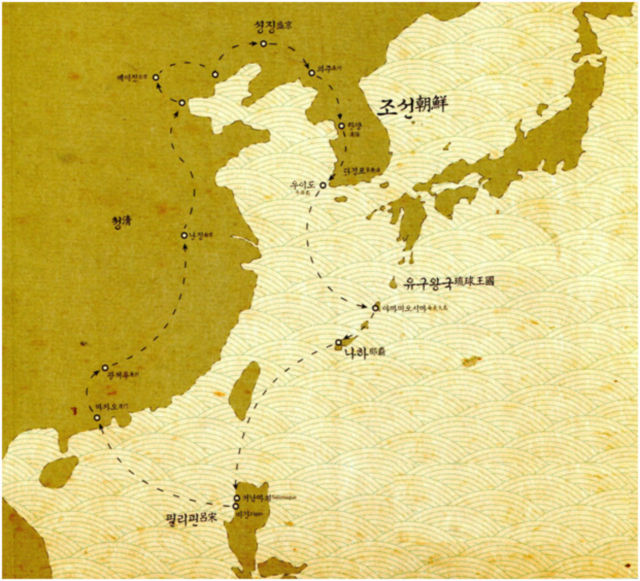
문순득의 항해 경로
전라남도 우이도의 홍어장수 문순득은 고기잡이를 나갔다가 거센 파도에 휩쓰려 류큐 섬을 거쳐 필리핀까지 표류되었다. 그는 안남(베트남)을 통해 중국을 거쳐 우여곡절 끝에 고향으로 돌아왔다(1801~1803). 마침 귀향살이를 하고 있던 정약전을 만나 자신이 보고 들었던 이야기를 들려주었다.
Moon Soon-deuk's Voyage Rout
Moon Soon-deuk, a skate merchant from Ui-do, Jeollanam-do, was fishing when he was swept away by strong waves and drifted to the Philippines via Ryukyu Island. He eventually returned to his hometown via Annam (Vietnam) through China (1801-1803). He met Jeong Yak-jeon, who was living in his hometown, and shared with him what he had seen and heard.
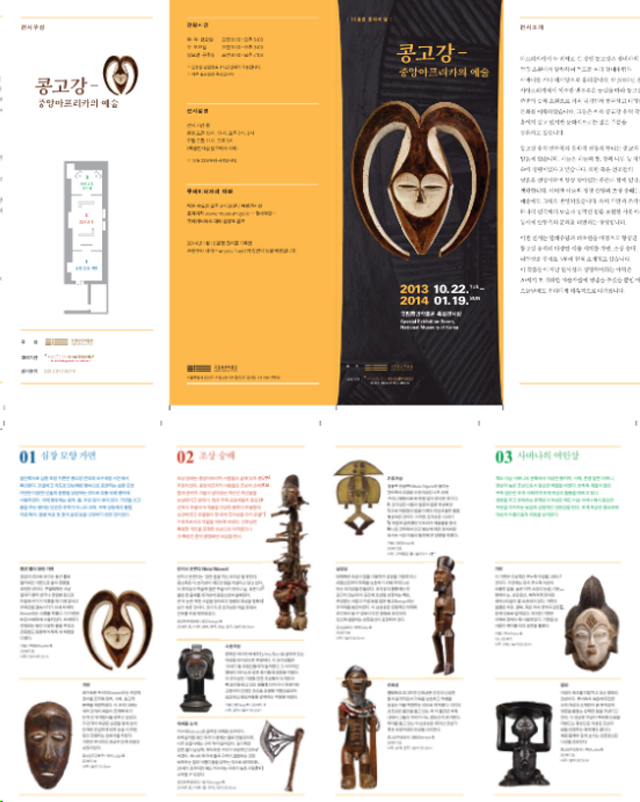
2013~4년 국립중앙박물관 중앙아프리카 전시회
한국의 국립중앙박물관에서 콩고와 중앙아프리카를 테마로 한 전시회가 열렸다. 그러나 여전히 한국의 아프리카에 대한 관심은 부족하다. 우리는아프리카와 열대에 대해 더 많은 관심을 가져야 한다
2013~4 The Korea National Museum-Exhibition of Congo
In 2013, the National Museum of Korea hosted an exhibition centered on Congo and Central Africa. Despite this event, the level of interest among Koreans towards Africa remains insufficient. It is imperative to increase our focus on Africa and tropical regions.
시인 백석, <북방에서>
아득한 녯날에 나는 떠났다
부여扶餘를 숙신肅愼을 발해渤海를 여진女眞을
요遼를 금金을
흥안령興安嶺을 음산陰山을 아무우르를 숭가리를
범과 사슴과 너구리를 배반하고
송어와 메기와 개구리를 속이고 나는 떠났다
나는 그때
자작나무와 이깔나무의 슬퍼하든 것을 기억한다
갈대와 장풍의 붙드든 말도 있지 않었다
오로촌이 맷돌을 잡어 나를 잔치해 보내든 것도
쏠론이 십릿길을 따러나와 울든 것도 잊지 않었다
(중략)
그동안 돌비는 깨어지고 많은 은금보화는 땅에 묻히고
가마귀도 긴 족보를 이루었는데
이리하야 또 한 아득한 새 녯날이 비롯하는 때
이재는 참으로 이기지 못할 슬픔과 시름에 쫓겨
나는 나의 녯 한울로 땅으로 ― 나의 태반胎盤으로
돌아왔으나
이미 해는 늙고 달은 파리하고 바람은 미치고
보래구름만 혼자 넋 없이 떠도는데
아, 나의 조상은 형제는 일가친척은 정다운 이웃은
그리운 것은 사랑하는 것은 우러르는 것은
나의 자랑은 나의 힘은 없다
바람과 물과 세월과 같이 지나가고 없다

경신대기근
한국은 기후변화와 별다른 연관이 없다고 생각할 수 있으나, 이는 17세기의 ‘소빙기’로 반박 가능하다. 17세기의 소빙기는 조선에 극악한 기근을 불러왔다. 인조 재위 기간이던 1640년대에 기근이 발생했으며, 1670년대에 발생한. 백만 명 이상의 사상자가 발생했던 조선의 경신대기근은 냉해, 가뭄, 수해, 풍해, 충해의 5대 재해가 겹첬던 대재앙이었다.
Kyŏngsin Famine
Korean people may think that their history has nothing to do with climate change, but this belief can be refuted by the 'Little Ice Age' of the 17th century. The Little Ice Age of the 17th century led to severe famine in Joseon. A famine occurred in the 1640s during King Injo's reign, and the Kyongsin Famine of Joseon in the 1670s was a catastrophic event with five major disasters: Cold Weather Damage, Drought, Floods, Typhoons, and Insect Damage.
